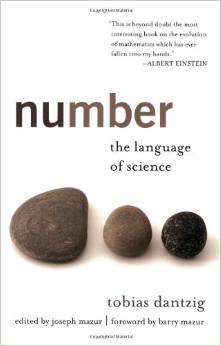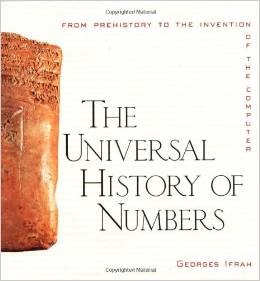Numbers are around us
Have you ever thought of how much of our daily life is based on numbers?
We use numbers for reckoning the time, counting distances, shopping, make a phone call, reading, watching tv,...
Simple calculations seem effortless and trivial for most of our necessities, but it was not so for ancient cultures!
The word number comes from the Latin "numerus" which means "quantity" from the root nem- "to divide, distribute, allot" (also related to the Greek nemein "to deal out").
Someone says that numbers were probably first used many thousands of years ago in commerce; someone else says that most robably counting originated thousands of years ago for religious reasons: pagan priests needed to calculate the frequency of certain natural phenomena for ceremonial purposes (think about Stonehenge stone circle in Britain).
The truth is that no one knows exactly when the man has begun to count.
We do not even know which ones were born first: the cardinal numbers (one, two, three ...) or the ordinal ones (first, second, third, ...).
The cardinal numbers come from the need to quantify the objects, the ordinal numbers may have appeared as part of ceremonial rituals which included the participation of various people in a specific order.
Clearly, an increase of abstraction even more significant was required to go from practice of counting to general conceptual understanding of the value of the number: two hands and two nights are both manifestations of the same number: the "two" (have you ever heard of Bertrand Russell?). Surely, it was not an easy task!
Note that number sense (see Dantzig) should not be confused with counting, which involves a rather intricate mental process. Counting, so far as we know, is an attribute exclusively human, whereas some species seem to possess a rudimentary number sense. In his beautiful book "Number The Language of Science", the famous mathematician Tomas Dantzig (1884-1956) tells of an experiment that seems to reinforce the above thesis. It follows.
A squire was determined to shoot a crow which made its nest in the watch-tower of his estate. Repeatedly he had tried to surprise the bird, but in vain: at the approach of the man the crow would leave its nest. From a distant tree it would watchfully wait until the man had left the tower and then return to its nest. One day the squire hit upon a ruse: two men entered the tower, one remained within, the other came out and went on. But the bird was not deceived: it kept away until the man within came out. The experiment was repeated on the succeeding days with two, three, then four men, yet without success. Finally, five men were sent: as before, all entered the tower, and one remained while the other four came out and went away. Here the crow lost count. Unable to distinguish between four and five it promptly returned to its nest.
All this to say that the faculty of perceiving number belongs to many species, not only to men.
And even for the average civilized man, the direct visual number sense rarely extends beyond four, and the tactile sense is still more limited in scope.
Probably, the genesis of number begins in the prehistoric ages. A rudimentary number sense, not greater in scope than that possessed by birds, was the nucleus from which the number concept grew. But through a series of remarkable circumstances man has learned to aid his exceedingly limited perception of number by an artifice which was destined to exert a tremendous influence on his future life. This artifice is counting, and it is to counting that we owe that extraordinary progress which we have made in expressing our universe in terms of number.




